Italy as a Country for International Business Report
- To find inspiration for your paper and overcome writer’s block
- As a source of information (ensure proper referencing)
- As a template for you assignment

Formal Institutions
Informal institution, resources and capabilities, international trade, foreign direct investment, foreign exchange, political system.
Italy is a European nation found along the Mediterranean coastline, with Rome as its capital city. Kings initially ruled the Italian up to the Second World War. Nevertheless, in 1946, Italians decided to overthrow the empire, and the nation became an independent state. The initial State continued until 1992, when scandals devastated Italy’s main political parties. Due to those major improvements in the parties, the era is known as the Second Republic, even though there were no constitutional changes (Capussela, 2018). Sergio Matterella is the current president of Italy, even though it is a ceremonial duty.
Legal System
Italy is a republic with a constitution composed of 139 reports demonstrating society’s elementary ground from 1948. The reports are into three main groups: essential philosophies, human rights and responsibilities, and republican organization (Capussela, 2018). The national assembly and regional members elect Italy’s presidents by secret ballot. Parliament elects Presidents for seven-year terms to prevent re-election by the same parliament.
There are three government systems in Italy, including legislative, judicial, and executive. As the head of the council, the prime ministers oversee and executive authority to the Council of Ministers who carry outlaws and other political decisions (Capussela, 2018). Acts are typically presented to the parliament, but in cases of urgency, bills can get approval through decrees or if the national assembly offers the council the responsibility to act.
Economic System
The Italian economy consists of established industries in the North owned by private companies and a less established, heavily subsidized agrarian in the South afflicted by poverty and poor infrastructure. The manufacturing of slightly elevated consumer products by midsized and small commercials, most of which are kinship, is a major booster of the Italian economy. In addition, Italy possesses a substantial subterranean economy, constituting approximately 17 percent of the GDP (Capussela, 2018). Farming, service industries, and infrastructure are possibly the most dominant regions to find these events.
Italy falls in third place economically in Europe, but its extremely high public bills and structural growth constraints have made it sensitive to financial sector scrutiny. Since 2007, Italy’s community bills have continuously risen, surpassing 131 percent of the GDP in 2017 (Capussela, 2018). However, shareholders’ fear about Italy and the broader eurozone disaster subsided in 2013, reducing Italy’s administration bills borrowing rates.
Components of the Culture
According to research, Italian is the State’s official language, and almost 93 percent of people speak Italian as their native language (Morretta et al., 2020). Italy’s languages include Sardinian and Piedmontese. Roman Catholicism is Italy’s most commonly practiced religion (Morretta et al., 2020). It is unsurprising, provided that Vatican City is found at the center of Rome and is the place of Roman Catholicism and home of the Pope.
Several architectural styles emerged in Italy but not limited to Renaissance, Baroque and Classical Roman (Morretta et al., 2020). The Colosseum and the Leaning Tower of Pisa are examples of the global’s most known structures in Italy. Most individuals view Italian cooking as an art, which has impacted food culture globally. For instance, pasta, wine, and cheese are predominant in Italian cooking. Pasta is found in various forms, including popular varieties such as spaghetti, lasagna, and linguine.
Context of Culture
Italy is a high-context society, and the majority of Italian cultural interaction relies heavily on physical indicators. A significant part of the content in high-context principles is hidden in the bodily setting of the person (Morretta et al., 2020). For example, the speaker believes that no explanation is necessary because the person to whom they are speaking should comprehend what they are trying to express.
Hofstede’s Cultural Dimensions
The concept is used to identify cultural variations between nations. Some of the Hofstede cultural aspects in Italy include individualism and power distance (Burton et al., 2021). The individualism aspect addresses people’s opinions of various groups in their environment. When a person is individualistic, they perceive themselves and their close family as vital. In contrast, collective individuals are concerned with the welfare of a larger group, including their corporation, and prioritize their own needs.
Italians thrive in individualism because they prioritize their close family over their friends and would rather do business with individuals they recognize and rely on when there is a need. The in-group then makes decisions, and meetings are mostly intended to tell the rest of the group about the results. On the other hand, power distance refers to the degree to which those at the bottom of the hierarchy embrace and even anticipate authority to be dispersed unfairly (Burton et al., 2021). This aspect demonstrates that Italians demand a certain amount of power distance. On the other hand, they like making fun of authority, and breaching rules appear to be an Italian pastime.
Natural and Geographic Resources
Italy has many natural resources, including crude oil deposits, pyrites, fluorspar, potash, pumice, coal, asbestos, and mercury, to mention a few (Cimini et al., 2020). The country’s mineral resources, such as petroleum and other rare earth elements, impact the Italian economy. Italy is a country found in a boot-shaped peninsula that extends outwards into the Adriatic Sea and Tyrrhenian and other water supply sources in the Southern part of Europe.
The county’s geographical position has a significant impact on its heritage. The sea surrounds Italy, and its core is subdivided into sections by mountains. The Alps, which extend across the State’s summit, are dotted with long, thin icy lakes, and the Apennines Mountains extend from the South to the Western end of the Alps down the peninsula (Cimini et al., 2020). The wooded slopes West of the Apennines resides several of Italy’s ancient cities, especially Rome.
Technological Advancement
Italy has dominated the European Union and financial markets, certainly bringing severe economic issues. However, Italy is the second-largest producer among the twenty-eight European Union member nations, close after Germany (Cimini et al., 2020). Italy is at the vanguard of the Fourth Industrial Insurgency facets, particularly in the information insurgency. Italy falls in the top 10 in the world regarding robotic intensity or the number of factory robots per worker, significantly outnumbering countries such as France, the United Kingdom, and Spain, with 132, 71, and 160 robots.
Development of Infrastructure
Italy is concentrating on massive infrastructure projects to boost its economy. The Italian directorate declared withdrawal limitations on 130 construction projects regarded crucial for reopening the country’s economy and modernizing its infrastructure network on the same day that the European Union reduced its 2020 GDP prediction for Italy to fall by 11.2 percent (Cimini et al., 2020). Italy’s major projects include; A proposed motorway between Rome and Latina, the expressway construction joining central Italy and Liguria, and the Ionica state route with links to the Port of Civitavecchia, which is just a few cases.
Italy usually imports engineering and metal items, particularly from France, the United States of America, the United Kingdom, and Germany (Bontempi et al., 2021). Imports of vehicles, minerals, and chemicals are also significant products to the Italian economy. Italy imports energy and crude oil, especially from the Middle East and North Africa.
Metals, fine machinery, and metal products constitute Italy’s two largest exports. Italy is also a well-known exporter of apparel and footwear and scooters, automobiles, notably luxury motor cars and motorbikes. Pharmaceuticals, other chemicals, and various culinary goods are exported from Italy (Bontempi et al., 2021). Italy distributes approximately 56 percent of its goods to other European Union nations, primarily Spain, Germany, and France (Bontempi et al., 2021). However, the United States of America and Switzerland are also important trade associates of Italy.
Trade Advantage
Italy is among the five States which enjoy a trade export surplus in the European nations. Italian firms are determined to retain their export edge. They invested majorly in new production technologies such as robots, factory automation, and additive production, which boost output and lower prices (Bontempi et al., 2021). Invitalia and State agency offers broad benefits to both Italian and foreign corporations through funding initiatives of all kinds in vital sectors such as factories, environmental protection, and tourism.
Economic Trade Conditions
Italy had a Gross domestic product of approximately $1.85 trillion in 2020 and a per capita Gross domestic product of about $31,630 (Bontempi et al., 2021). Italy falls in eighth place economically in the current world ranking. Due to the Corona infection and the Italian administration’s containment actions, Italy’s GDP will reduce by approximately 8.9 percent in 2020 (Bontempi et al., 2021). Nevertheless, the Organization for Economic Co-operation and Development anticipated that Italy’s GDP would grow either in 2021 or 2022, with about 4.5 percent in 2021 and about 4.4 percent in 2022.
International Trade Policy
Being a part of the European Union, Italy follows EU legislation that applies throughout the EU. Import obstacles based on tariffs come from both national and EU rules (Bontempi et al., 2021). Even though some limits exist to particular categories of goods, the European Union’s international trade policy is largely flexible, for example, agricultural goods. However, Italy is a member of the European Union and the World Trade Organization. Hence, it uses the Technical Barriers to Trade team to deliberate on some critical trade issues and research the choices and executions of the regulations.
Instruments of Trade policy
Italy is a European Union associate; therefore, products easily move between associate states just after establishing the internal market (Bontempi et al., 2021). Even though the unrestricted distribution of goods subsists within Customs Union, the Common Custom Policy exists for products brought from other states, enabling uniform customs taxes to be applied irrespective of the origin member state.
FDI Flow and Stock
Foreign Direct Investment flows in Italy withstood an overall negative trend, increasing by 2 percent, maintaining a trend that began in 1998. Between 1990 and 2001, its outward FDI stock increased sixfold, making it a net outward investor. Italy’s FDI stock spreads geographically inbound and outbound in the Netherlands, Switzerland, and France (Bayar & Ozturk, 2018). In 2020, Italy’s inward FDI stock was valued at approximately 469.29 billion dollars compared to 443.53 billion dollars in the past year (Bayar & Ozturk, 2018). The Foreign Direct Investment to GDP ratio is low, implying more investment
Multinational Enterprises
Numerous multinational corporations on Italian soil contribute significantly to the State’s employment rate. Over 80 percent of the 1.3 million Italians hired worked in the top ten corporations, with United States firms alone employing roughly 300.000 people (Bayar & Ozturk, 2018). However, the French retailer Auchan, which recruits over 12.000 individuals in its stores and supermarkets, is the largest multinational firm in Italy in terms of employed labor.
Currency and Exchange
Italians mainly use Euro as a form of exchange for products and services. One Euro is denominated into cents, and when purchasing money in Italy, one has to search for the EUR currency code, denoted by the notation (Febrero et al., 2018). The European System of Central Banks devises a model for determining the Euro’s foreign currency exchange rates in Italy. The rates are based on a day-to-day concertation mechanism among the world’s most powerful central banks.
Price Difference and Balance of Payments
Italy’s consumer spending financial account was about EUR2791.00 million in November 2021. According to past data, it attained an all-time high of 9404.00 Million euros in April 2021 and a slight decline of negative 1062.00 Million euros in March 2021 (Febrero et al., 2018). Economic Survey gives the exact current value, a previous data chart, and related metrics for Italy – Current account surplus, financial information – latest updated from the EUROSTAT on February 2022.
Bayar, Y., & Ozturk, O. F. (2018). Impact of foreign direct investment inflows on tax revenues in OECD countries: A panel cointegration and causality analysis. Theoretical & Applied Economics , 25 (1),31-40.
Bontempi, E., Coccia, M., Vergalli, S., & Zanoletti, A. (2021). Can commercial trade represent the main indicator of the COVID-19 diffusion due to human-to-human interactions? A comparative analysis between Italy, France, and Spain. Environmental Research , 201 , 111529.
Burton, L., Delvecchio, E., Germani, A., & Mazzeschi, C. (2021). Individualism/collectivism and personality in Italian and American Groups. Current Psychology , 40 (1), 29-34.
Capussela, A. L. (2018). The political economy of Italy’s decline . Oxford University Press. 25 (1),69-90.
Cimini, C., Boffelli, A., Lagorio, A., Kalchschmidt, M., & Pinto, R. (2020). How do industry 4.0 technologies influence organizational change? An empirical analysis of Italian SMEs. Journal of Manufacturing Technology Management , 28 (11), 119-126.
Febrero, E., Uxó, J., & Bermejo, F. (2018). The financial crisis in the eurozone: A balance-of-payments crisis with a single currency? Review of Keynesian Economics , 6 (2), 221-239.
Morretta, V., Syrett, S., & Ramirez, L. S. (2020). Territorial capital as a source of firm competitive advantage: Evidence from the North and South of Italy. European Planning Studies , 28 (12), 2390-2408.
- The Impacts of FDIs and Trade to the Asian Pacific Regions
- Political and Economic Stability on FDI Flows
- Italian Culture
- Transactions in the Market and Consumers' Collective Actions
- Friedrich Hayek’s Major Contribution to the Field of Economics
- Varieties of Capitalism and Employee Relations
- Strategic Bargaining in Managerial Economics
- Global Issues: Politics, Economics, and Culture by R.Payne
- Chicago (A-D)
- Chicago (N-B)
IvyPanda. (2023, January 7). Italy as a Country for International Business. https://ivypanda.com/essays/italy-as-a-country-for-international-business/
"Italy as a Country for International Business." IvyPanda , 7 Jan. 2023, ivypanda.com/essays/italy-as-a-country-for-international-business/.
IvyPanda . (2023) 'Italy as a Country for International Business'. 7 January.
IvyPanda . 2023. "Italy as a Country for International Business." January 7, 2023. https://ivypanda.com/essays/italy-as-a-country-for-international-business/.
1. IvyPanda . "Italy as a Country for International Business." January 7, 2023. https://ivypanda.com/essays/italy-as-a-country-for-international-business/.
Bibliography
IvyPanda . "Italy as a Country for International Business." January 7, 2023. https://ivypanda.com/essays/italy-as-a-country-for-international-business/.
EssayEmpire
Italy essay.

Italy is a country of southern Europe comprising 20 regions. It is one of the largest economies in Europe, and in the world. Its growth rates are consistently among the highest in the European Community. Italy’s economic growth has been characterized, since the political unification in 1861, by the following factors: the divergence between an industrialized north and a prevalently agricultural south; the interventionism of the state; the predominance of family capitalism; and the large number of small and medium-sized firms. More recently, the Italian economy has been affected by political instability and international competition.
The Italian economy is characterized by a rather marked division between an industrialized north, where the great majority of industrial and manufacturing activities are located, and a less developed south. The dichotomy between the northern and southern parts of the country has been a major problem for the implementation of equal economic policies. The northern regions of the Italian peninsula, especially Lombardy, Piedmont, Veneto, and Liguria, see the greatest concentration of industrial activities. By contrast, the southern part of the country has never experienced industrial development comparable to that of the northern regions. In the 1960s, when Italy went through an economic boom, the divergence between the north and the south heightened, and many people migrated from the south to the north in search of better-paid jobs. Although in recent decades new opportunities for the economic development of the southern region have arisen, thanks also to the financial aid of the European Community, the north-south dichotomy and its social and political implications continue to be a current issue.
Since the origin of Italy as an independent and unified country in the mid-19th century, the Italian state has been markedly interventionist, entering the country’s economic life in many ways, especially by subsidizing several industrial sectors. Along with Japan and Germany, Italy has been considered one of the most interventionist states. Italian industries and banks have benefited, over time, from large state subsidies. For example, Sofindit (financial company of the Banca Commerciale Italiana), Ansaldo, Terni, and in recent times even Fiat have received frequent subsidies from the state. The reasons behind the interventionism of the Italian state are several and complex; they are closely linked on the one hand, to the a typicality of the Italian political and economic unification, and on the other to the specificity of the Italian economic growth that witnessed a rather peculiar combination of private and public capitalism.
Family ties have been extremely important for the growth of modern Italian business, and Italy owes much to “familial capitalism,” as the remarkably impressive persistence over time of family-run firms in the Italian economy evinces. Although the notion of family business has had for a long time a negative connotation that suggests economic backwardness and commercial weakness, the excellent performances of Italian family-run companies and industries in the past decades contradicts such generalized view. Family-run business can be, in practice, highly articulated forms of managing business that displays a remarkable flexibility, ability in negotiation, and noteworthy capacities of quickly responding to market changes. Well-known Italian companies such as Benetton, Missoni, Fiat, and Beretta, have been founded and run by families.
Along with family capitalism, another distinguishing aspect of Italian economic growth has been the pervasive presence of the so-called piccola impresa (small business). Since the late 19th century it has represented a vital component of the domestic economy, particularly in northern Italy. In the 20th century the excellent performance of Italian small business, especially in some specific sectors, made it an admired model of “flexible capitalism.” The combination of family capitalism and the pervasiveness of small business (the great majority of Italian manufacturing and industrial activities are run by one family and employ less than 50 workers) seems to be the hallmark of the Italian economy.
In spite of its flexibility and competitiveness, the Italian productive system, however, has been able to cope only partially with the upheavals of the last three decades and the challenges of globalization. In spite of an increasing gross domestic product ( according to data provided by ISTAT, Italian national product has grown steadily from 1970 to 2007), the Italian economy has been one of the most unstable in Europe in the last two decades. It has continued to have one of the highest growth rates within the European Community, but it has progressively shown a number of structural weaknesses. Italian economic performance has lagged behind that of other EU countries, and the prolonged climate of political instability in the last few years has affected the Italian economy. The introduction of the euro in the 1990s, which replaced the Italian lira, has led to additional difficulty, with consequent price increases and stagnation of production. Fierce international competition in some sectors, such as textiles, has impacted Italian production. A restructuring of the Italian economy has been called for by many parties.
Bibliography:
- Maurizio Carbone, “Italy and the South of the World: Still a Laggard in International Development?” Journal of Modern Italian Studies (v.13/1, 2008);
- Jon Cohen and Giovanni Federico, The Growth of the Italian Economy, 1820–1960 (Cambridge University Press, 2001);
- Luca Iandoli, Hans Landström, and Mario Raffa, Entrepreneurship, Competitiveness and Local Development: Frontiers in European Entrepreneurship Research (Edward Elgar, 2007);
- Christiane Krieger-Boden, Edgar L. W. Morgenroth, and George Petrakos, The Impact of European Integration on Regional Structural Change and Cohesion (Routledge, 2008);
- Silvia Magri, The Financing of Small Innovative Firms: The Italian Case (Banca d’Italia, 2007);
- Camilla Mastromarco and Ulrich Woitek, “Regional Business Cycles in Italy,” Computational Statistics and Data Analysis (v.52/2, 2007).
This example Italy Essay is published for educational and informational purposes only. If you need a custom essay or research paper on this topic please use our writing services. EssayEmpire.com offers reliable custom essay writing services that can help you to receive high grades and impress your professors with the quality of each essay or research paper you hand in.
- How to Write an Essay
- Business Essay Topics
- Business Essay Examples
ORDER HIGH QUALITY CUSTOM PAPER

Special offer!
GET 10% OFF WITH 24START DISCOUNT CODE
Related posts.

BusinessEssay . (2022) 'Italy’s Economic Analysis'. 15 October.
BusinessEssay . 2022. "Italy’s Economic Analysis." October 15, 2022. https://business-essay.com/italys-economic-analysis/.
1. BusinessEssay . "Italy’s Economic Analysis." October 15, 2022. https://business-essay.com/italys-economic-analysis/.
Bibliography
BusinessEssay . "Italy’s Economic Analysis." October 15, 2022. https://business-essay.com/italys-economic-analysis/.
- Stimulus Package: Pros and Cons
- Neoclassical and Marxist Paradigms of Labor
- How Small and Medium Enterprises Can Deal with the Current Problem of Recession in the United States
- Market Failure – Operation of an Oil Cartel in the Middle East
- Rogers’ Five Factors in Marketing Innovation
- Environmental Economics. Water Scarcity in Australia
- Olympics and Its Economic Impact
- Organizational Change: Forces and Methods of Change
- The Game Theory: Application in Strategy Making
- India & China Economical, Financial and Ecological Environment
Italy - Free Essay Samples And Topic Ideas
Italy, known for its rich cultural heritage and significant contributions to art, science, and politics over the centuries, presents a wide range of topics for exploration. Essays on Italy could delve into its complex history, from ancient Rome to modern Italy, its famed Renaissance period, or its culinary and fashion traditions. Additionally, discussions might extend to Italy’s political landscape, its role within the European Union, and its regional diversity. A vast selection of complimentary essay illustrations pertaining to Italy you can find at PapersOwl Website. You can use our samples for inspiration to write your own essay, research paper, or just to explore a new topic for yourself.
The Impact of Globalization in Italy
Abstract Italy is in the midst of a huge transformation. The country is often associated with having extraordinary food and romantic adventures, but today Italy's image is changing as it is becoming a leader in productions of machinery around the world. This is due to globalization, the process of social, political, economic, cultural, and technological integration among countries around the world. Businesses throughout the world come together to trade goods that are not easily accessible in the country they are […]
The Renaissance Period during the 1400 Century in Florence Italy
The Renaissance was an intellectual, scientific, and cultural changing period that began during the 1400 century in Florence Italy. There are three key reasons that caused the Renaissance, which was the plague that were fleas on rats which lead to the Black Death and killed approximately 30%-60% population, the renew interest in secular (non-religious) things. For example, artists stopped drawing their paintings religiously and they found other things worth living for, and humanism creating a new modern way for them […]
The Romantic Era and the Renaissance Period
The Italian Renaissance, lasting from the 14th to the 17th centuries, and the Romantic era of the late 18th and early 19th centuries were influential both in the aspects of art and of literature. The Italian Renaissance saw a notable revival of interest in the classical values of ancient Greece and Rome. Having the ability to rely on the political stability and growing prosperity in Italy, the people allowed for the development of new technologies- including the printing press, a […]
We will write an essay sample crafted to your needs.
The Beauty of the Interior of St Marks Cathedral in Venice, Italy
The interior of St Mark's cathedral is located in Venice, Italy. The current St Mark's cathedral was the second after the original St Mark's cathedral, which is located in Doge's Palace, burnt down in 976. The current form was finished in 1063. The exterior is a beautiful architectural achievement and has been altered many times throughout the centuries. Outside are many sculptures such as horses and the Tetrarchs. The interior is considered just as, if not more beautiful than the […]
An Analysis of the Influence of the Renaissance
Abstract This paper offers an in-depth analysis on the time period known as the Renaissance and how it has influenced society as a whole. The question that prompted this research to take place was “How did the Renaissance change the world of art and the world itself?” To be specific, this paper analyzes a multitude of different disciplines and discusses the impact that the Renaissance had on them. This paper focuses on how Humanism brought us the Renaissance and how […]
Italian and Northern Renaissance
The Italian and Northern Renaissance were both a reawakening of art and science after the middle ages. They both were focused on art, literature, science, and religion. Even though they were both focused on the same subjects, their styles are very different. The Italian Renaissance started before the Northern Renaissance. This is because of the amount of trade Italy had with Africa and the Middle East. It was also because of the Crusades. People from Africa and the Middle East […]
An Age of Discovery
The Renaissance, also known as 'An Age of Discovery' started in Italy in the mid-fourteenth century. The Renaissance served as a transition from the middle ages to modernity. The term comes from the French word for 'rebirth', which refers to the cultural, political and scientific development contributed to our society's reformation. The intellectual and educational movement of the Renaissance started because people got tired of the medieval society, otherwise known as the Dark Ages; which was characterized by wars, diseases, […]
Italian and Northern European Renaissance
The Renaissance shapes Europe and helps Europe become the superpower they are now. The renaissance leads to new inventions and new lifestyles centered around enjoying life. The Italian renaissance and the northern European renaissance are both very difference but influence each other. One example of influences, in Flanders, where the northern Europe renaissance began, oil paint is invented and becomes very popular among Italian painters. Both renaissances have many differences, but it is their similarities that make them both a […]
Italians being “the Firstborn Among the Sons of Modern Europe”
"Italians being “the firstborn among the sons of modern Europe” combined the revival of antiquities and the ‘all-sided man’— ‘l’uomo universale’— developing free personality to undeniably question the Church and cast a general spirit of doubt in the religious beliefs of the period. In his work Buckhardt says, “the subjective side at the same time asserted itself with corresponding emphasis; man became a spiritual individual, recognized as such.” The interest of humanities and culture of learned men helped propel the […]
Western Europe Finds itself in a Privileged Position
"In today’s world, Western Europe finds itself in a privileged position, with many of the world’s most prosperous nations found within its continent, it often serves as a proponent of freedom and affluence around the globe. When admiring the prestige of Western Europe, one must wonder, how is it that the world’s smallest continent has birthed many of the modern world’s most powerful nations? As you may expect, the answer to this question is quite subjective, but certainly, much of […]
What is a Renaissance?
It is the revival of art and literature under the influence of classical models. Both the Italian and Northern Renaissances are two of a kind that writers and humanists influenced greatly. Being from religion to education, many things sprung to life in these very curious periods. The Greek and Latin literature was a the lighter to ignite the spark for Italy to come alive. The Roman Empire ruins are scattered over the countryside to remind people of the Roman victories. […]
Martin Luther and German Nationalism
Martin Luther was arguably one of the most influential Germans, or even people, in human history. The Reformation and Great Schism had effects that rippled throughout Europe at the time and reshaped the direction of history in ways that we still see today. However as people tend to focus on the wider reaching effect that Martin Luther had on the world his effect and influence on a micro level is often overlooked. That is why for this paper I will […]
Renaissance: Impact on Cultural Movements and Religious Reformations
The Renaissance was a major cultural movement which started around the 13th century and spanned through the 16th century. This movement was a period of European prosperity that first originated in Italy then eventually spread to all over Europe. The Renaissance means “rebirth” which refers to the return of the old Roman and Greek worlds. This rebirth inspired the beginning of the protestant reformation which took a great impact on religion in Europe. Developments in science, art, literature, and music […]
Donatello: Revealing the Birth of a Renaissance Maestro
Donatello Italian sculptor famous revival noticed light around 1386 in florence Italy. While date his exact birth remains mystery circumstances offer his early life weak lights in a tapestry revival florence prosperous. Born so as Donato di Niccolò di Betto Bardi he later accepted the name Donatello name that became synonymous with artistic innovation and authority. Information in words from childhood Donatello thin man intrigue adds air to his formative years. Increases in florence in one flow from 14 - […]
The Ownership of Olive Garden: a Look into the Corporate Structure and History
In the dynamic landscape of American dining, Olive Garden emerges as a symbol of comfort and togetherness, offering a slice of Italy amidst the modern-day rush. However, beyond the allure of its famous breadsticks and pasta dishes lies a complex web of corporate decisions and historical narratives that have shaped its journey. To truly understand Olive Garden, one must delve into its corporate evolution and the stories that have intertwined to form its unique history. Founded in 1982 by the […]
Savoring the Flavors: a Culinary Delight at Olive Garden
Dining at Olive Garden transcends the simple act of eating; it’s an engaging experience that captivates the senses and fosters connections over plates of delightful, Italian-inspired fare. Upon entering, you are greeted by the mouthwatering scent of garlic and herbs, a touch of wine, and a warm, inviting atmosphere that sets the scene for a culinary journey. Enjoying the flavors at Olive Garden is both a celebration of traditional and innovative dishes, each meticulously crafted to ensure every bite is […]
Understanding the Total Number of Punic Wars
The epic narrative of the Punic Wars can be likened to an immense tapestry, intricately crafted with threads of ambition, strategy, and destiny. Each conflict weaves its own distinct pattern into this narrative, portraying not merely the confrontations between Rome and Carthage, but also the intricate interplay of power, alliances, and betrayals that sculpted the ancient world. The origins of the First Punic War (264–241 BC) are rooted in the enticing allure of Sicily, a prize both Rome and Carthage […]
Unveiling the Nation: a Comprehensive Look at Italy as a Country
Enveloped by the Mediterranean's embrace, Italy exemplifies the splendor of human heritage and the resilient spirit of its inhabitants. This nation is a historical mosaic, where ancient Rome's remnants coexist with Florence's Renaissance masterpieces, blending the historic with the contemporary to present a panorama of cultural and natural marvels. To truly appreciate Italy, one must delve into its layered history, traverse its varied landscapes, and grasp the complex weave of its cultural identity. The narrative of Italy commences millennia ago […]
The Italian Roots of Christopher Columbus: a Historical Perspective
Christopher Columbus, often acclaimed for "discovering" the Americas, originated from Italy, specifically from the Republic of Genoa, now a part of contemporary Italy. This essay delves into how Columbus’s Italian background influenced his life, his historic journeys, and ultimately, the course of global history. Born in Genoa in 1451, Columbus was raised in an environment steeped in a rich seafaring tradition. Genoa, along with Venice, Pisa, and Amalfi, was celebrated as one of Italy’s great Maritime Republics. These cities were […]
Rise of Mussolini: Italy’s Fascist Ascent
In the tumultuous wake of World War I, Italy found itself adrift on a sea of political turmoil, economic distress, and societal unrest. It was in this tempestuous atmosphere that Benito Mussolini, a figure brimming with charisma and ambition, emerged as a formidable force, reshaping the course of Italian history and leaving an indelible mark on the 20th century. Born in 1883 to a socialist blacksmith and a schoolteacher in the quaint town of Predappio, Mussolini was steeped in a […]
Additional Example Essays
- Research Paper #1 – The Trail of Tears
- Rosa Parks Vs. Harriet Tubman
- Ancient Greek Contributions to Western Civilization
- Jeffersonian & Jacksonian Democracy
- The American and The French Revolutions
- Driving Forces of European Imperialism in Africa
- 30 years from now essay
- Pan's Labyrinth Greek Mythology
- Analysis of Letter from Birmingham Jail
- The Road not Taken Poem Analysis
- Homeschooling vs Public School
- "Mother to Son" by Langston Hughes
1. Tell Us Your Requirements
2. Pick your perfect writer
3. Get Your Paper and Pay
Hi! I'm Amy, your personal assistant!
Don't know where to start? Give me your paper requirements and I connect you to an academic expert.
short deadlines
100% Plagiarism-Free
Certified writers
- Netherlands
- Saudi Arabia
- South Africa
- Switzerland
- United Arab Emirates
- United Kingdom
Employment Basics
Business culture and etiquette in Italy
As a newcomer, it is essential to understand business etiquette in Italy. Learn about the hierarchy, diversity, and typical conduct within the workplace.

By Gary Buswell
Updated 15-5-2024
Whether you’re looking for a job in Italy or starting your own business , it helps to understand the norms and practices regarding business culture and etiquette in Italy . Italians have a distinct way of behaving professionally and conducting business, which may differ in some respects from other countries, even within Europe.
Learn how you can avoid faux pas in your Italian workplace by exploring the following topics:
An overview of business in Italy
Time and space in italian business, business structure and hierarchy in italy, diversity in the italian workplace, women’s participation and representation, women’s income and the gender pay gap, attitudes toward women in the workplace, business strategy, planning, and decision-making, italian business meetings and negotiations, business networking, business socializing, communication, business cards, social provision through businesses in italy, businesses in the italian community, corruption and fraud in italy, useful resources.
With the third-largest economy in the European Union (EU) as well as a rich cultural history and appealing climate , Italy attracts many international professionals to its shores.
In addition, the Italian government wants to increase foreign investment in the country – something which has stalled in recent years – through the EU-funded Resilience and Recovery Facility (RRF) .

Italy has several thriving industries, with the best-performing ones including:
- Retail (notably clothing and fashion)
- Manufacturing (especially car manufacturing )
- Science and technology
- Construction

Starting a business in Italy
Foreign-owned businesses play a significant role in Italy’s economy, accounting for 18.4% of the country’s turnover in 2015. It also has a sizable international workforce, around 10% of all employees . The country’s economy is recovering steadily from the COVID-19 pandemic, although growth is slower than in many other EU countries (predicted at 1% for 2024 ).
Italy has a lower employment rate (around 60% in Q3 of 2022) than the EU and the Organization for Economic Development ( OECD ), which is almost 70% . On average, workers also earn slightly lower wages and salaries . However, the Italian cost of living is cheaper than in France , Germany , or the United Kingdom (UK) .
Italian business culture
Business culture in Italy is a mixture between a clear hierarchy in the organizational structure and fairly informal business practices and communication. For example, top management tends to make executive decisions, but meetings are relaxed and open to discussion. Disagreeing with superiors is neither uncommon nor rude if you have a valid point.

The vast majority of Italian businesses are small or medium-sized, with many of them family-run. Business relationships are generally personal and respect values such as trust, loyalty, and familiarity. This is particularly true in the south of the country.
Bigger Italian cities in the north, like Rome ( Roma ) and Milan ( Milano ), have many multinational firms, meaning that the culture is more globalized , formal, and diverse. It could also add to cultural differences between workers.
The standard working week in Italy is 40 hours long. According to Italian labor law , anything above this is overtime. Eurostat data (2021) shows that paid employees work a slightly shorter week (35 hours), while self-employed business owners tend to work longer (46 hours). This is similar to other EU averages. The typical working day starts around 09:00–09:30 and finishes at around 18:00–18:30, with lunches taking up to two hours. The standard minimum is four weeks of holiday per year.
Italy scores well for work-life balance on the OECD Better Life Index . For example, only 3% of Italian employees work extended hours compared with an OECD average of 10%. Italian laws don’t provide for annual leave. However, collective agreements ( contratti collettivi or accordi collettivi ) between unions and employers generally protect employees.
Interestingly, flexibility is more valued than punctuality in Italian business culture. It’s not uncommon for people to turn up late for meetings or for these to overrun – especially if it’s a lunch meeting involving fine Italian cuisine . However, ensure that you arrive on time for job interviews or important appointments if you are an employee .
As with many countries, remote working has increased since the COVID-19 pandemic. Emergency remote working measures ended in August 2022 . Still, many companies are still utilizing home-working methods for staff to reduce running costs and offer flexibility. For many, it has become a hybrid arrangement, with workers splitting their time between the office and remote venues.
Italy has plans to launch a remote work visa , similar to the one in Spain , which is great news for digital nomads .
The tradition of the smaller family-run enterprise in Italy has influenced the business culture when it comes to hierarchy. Most firms put the decision-making capacity in the hands of owners and executive staff.
Leadership styles can be charismatic but depend on the personalities of owners and senior staff.
Other employees are free to voice opinions in meetings. Still, it’s the top-level players who usually take credit and responsibility. Generally, relationships between employees at different levels are relaxed and informal.

You will also find that older people in the workplace often command respect. Again, this attitude reflects the broader Italian culture and the tradition of generational family-run businesses. Indeed, you’ll find these views more prevalent in southern Italy and smaller companies.
However, the business culture is changing, especially in multinational companies in urban areas. Also, newer startups typically have a flatter organizational structure with decentralized decision-making policies.
Workers in Italy are protected against discriminatory practices by the following legislation:
- The Italian Constitution
- The Civil Code ( Codice Civile )
- The Workers’ Statute ( lo statuto dei lavoratori )
- Various labor laws at a national and EU level
Approximately 10% of the labor force are international workers. They are spread across sectors and job levels, although there are more numbers employed in lower-wage sectors such as:
- Agriculture
- Hospitality
- Personal services
Italy ranks sixth in the EU for the employment rate of workers with disabilities. Several employment laws promote workplace integration, including quota systems where large employers must recruit a minimum percentage of disabled employees.
The 2023 Rainbow Map , measuring LGBTQIA+ rights and freedoms, places Italy in 33rd position out of 49 European countries . Also, when it comes to rights, laws, freedoms, and public attitudes toward the community, the country scores 65 out of 100 on the LGBTQIA+ Equality Index .
Therefore, although LGBTQIA+ workers have legal equality and protection from discrimination, they still experience negative public attitudes and discriminatory behavior from other employees.
Women in the workplace in Italy
The Italian Constitution recognizes gender equality in all public spheres, including the workplace. However, women are still underrepresented at all levels of employment, earn less than men, and face more barriers progressing in their careers.
Problems include public attitudes towards women’s role in society and, generally, taking more responsibility for childcare.

Italy ranks 63rd out of 146 countries on the 2022 Global Gender Pay Gap Report by the World Economic Forum ( WEF ). It also came 14th in the EU on the 2022 Gender Equality Index , scoring 65 out of 100 points based on the following indicators:
This is lower than one might expect for a country of its economic standing and below the EU average of 68.6. It highlights how Italy has some way to go before achieving meaningful gender equality.
To combat current issues, the government has adopted a National Strategy for Gender Equality ( Strategia Nazionale per la Parità di Genere ) covering 2021–2026. This focuses on salaries, competencies, time, power, and the impact of COVID-19.
Women have low workforce participation rates in Italy. Just over half ( 52.1% ) aged 20–64 are in employment, compared to 71.8% of men. This is the lowest rate in the EU and the most significant gap between women and men.
Unsurprisingly, given the lower overall economic participation rates, women remain underrepresented at the higher job levels. Italy ranks 97th for female managers, senior positions, and decision-making staff, and 87th for women in professional and technical roles on the 2022 Global Gender Pay Gap Report . It examined 146 countries globally.
The same report shows that women in Italy constitute:
- 38.8% of company board members
- 15.3% of top managers
- 11.5% of business owners or leaders
Furthermore, Italy ranks only 56th globally (2023) for women in parliament ; they represent 32.3% of the total.
These statistics contrast with women’s academic attainment in Italy . The WEF report shows that the country ranks 110th for women’s economic participation and opportunity but is 59th for education, with similar educational outcomes for both genders. Simply put, a discrepancy exists between women’s academic levels and career achievements.
The Gender Equality Index report suggests that the burden of unpaid work is a key factor in women’s lower participation rates. They are disproportionately affected by childcare responsibilities, long-term care duties, and housework. For example, 67% of women in Italy reported doing all or most of the housework compared to 22% of men.
According to a 2021 national statistics report on the gender pay gap in Italy, the average gross salary in 2018 was €37,912 for men and €31,335 for women. This equates to a gender pay gap of 6.2%. The gap increases at the higher end of the labor market, reaching 18% for those with tertiary education and 27.3% for managerial staff.

Minimum wage and average salaries in Italy
Italy’s gender pay gap is lower than the EU average of 13%. It ranks 4th among EU and European Free Trade Association ( EFTA – Iceland, Liechtenstein, Norway, and Switzerland) nations, behind Luxembourg , Romania, and Slovenia.
As part of its gender equality strategy, the Italian government introduced an equal pay law in 2022.
A common barrier that women in Italy face is the persistence of gender stereotypes regarding their role in society. In a 2018 survey by the International Institute of Statistics (Istat), 32.5% of respondents agreed that success at work is more important for a man than a woman, and 27.5% believed that men should be the primary family breadwinners. These views are more common in the south of the country, with over two-thirds (67.8%) holding at least one stereotypical belief about women’s roles compared with 58.8% nationwide.
Levels of sexual harassment are also high in Italy. It is estimated that nearly half of women ( 43.6% ) have experienced sexual harassment ( molestie sessuali ) at work in their lifetime. The most common forms are verbal harassment, unwanted touching, inappropriate proposals, and sexual blackmail.
If you experience harassment in the workplace in Italy, you should speak with your employer or a trade union representative ( rappresentante sindacale ) as soon as possible. You can also call the toll-free anti-violence helpline ( Numero Anti Violenza e Stalking ) on 1522
Conducting business in Italy
Italian organizations generally have a more casual approach to strategic planning than many other western nations . Decision-making is typically the domain of business owners who may consult with other executive staff but rarely with lower-level employees. Long-term written plans, periodical reports, and strategic reviews are more common among larger and multinational firms but are seldom a feature of smaller or medium-sized businesses.

Business decision-making can often take time. Owners or management staff will first make a personal connection and build trust with executives from another company before doing business. The final decision is usually in the hands of the owner or managing director, who will typically want to spend some time weighing up all possible risks and benefits.
Business meetings are generally much less formal in Italy than in northern European nations. They tend to be influenced by Italian culture in general. In other words, you can expect the following:
- Meetings to start late and finish even later; Italians have a casual relationship with punctuality, however, don’t take this as a cue to turn up late for proceedings
- Plenty of friendly small talk about non-business matters
- Flexible agendas, with discussions frequently deviating from any written plans
- Interruptions, people talking over one another, and disagreements; things can sometimes get heated, but this is standard for Italian business meetings
As top-level staff usually make the final decisions, any work meetings in Italy aim to inform everyone of decisions already made rather than to put things up for discussion. However, staff feedback is usually welcome and often encouraged, so feel free to give an honest opinion.
The negotiation process can take a long time in Italy. Again, this is because personal relationships are so important, and everything has to be signed off at the very top. Verbal agreements are usually bonding in Italian business, but the involved parties typically confirm the decisions in writing afterward. When negotiating with international companies, staff will normally conduct meeting in English.
Networking is a vital part of business development in Italy. For businesses to succeed, they need to spend a lot of time building strong relationships with others working in their field.

Targeted networking on LinkedIn
Regional networks tend to be stronger than nationwide ones in Italy, with cities like Rome and Milan having thriving commercial scenes and running events, conferences, and job fairs . You can check networking opportunities through platforms such as:
- Business Network International (BNI) – the Italian branch is BNI Italia
- Italian Trade Agency (ITS) or ( Agenzia ICE ) – governmental agency that supports the business development of companies abroad and promotes the attraction of foreign investment in Italy
- Chamber of Commerce ( Camere di Commercio ) – offers information on various topics and maintains a business portal
- INV Italia – National Agency for Investment and Business Development
- Made in Italy – Ministry of Enterprises initiative to encourage investment and business opportunities
- Incentivi – Ministry of Enterprises portal to help businesses, professionals, and administrations
- LinkedIn – a great tool for targeted networking if you’re looking for a new job
To successfully network in Italy, be prepared to spend a lot of time developing those personal relationships to show that you have integrity and can be trusted. This can even involve meeting socially and chatting about various non-business topics.
With cuisine such a big part of Italian culture, it’s no surprise that Italians love their business lunches. These can last 2–3 hours, with business-related matters sometimes secondary in terms of discussion topics.

Many Italian companies also make social activities an important part of their calendar, for example, evenings out or team activity days. However, Italians are less likely to invite business colleagues or associates into their home unless they have developed an out-of-work friendship.
Business etiquette in Italy
Italians are known for being expressive and quite open in their communication style , with fewer formalities than in some other countries. Still, there are certain things to bear in mind.
Although the cheek-kiss is a popular Italian greeting, handshakes are more common in business situations unless you know the other person well. When addressing someone, you should use signore/signora – or a title such as doctor ( dottore /dottoressa) or professor ( professore / professoressa ) if they have one – plus their last name. Use lei rather than the more informal tu when saying ‘you.’

Italian etiquette and culture
Maintaining eye contact is essential when speaking with someone. Personal space is less important in Italy than in northern European countries, so don’t be alarmed if people get up close and frequently touch your arm or back. Italians are masters of hand gesture , so it’s a good idea to familiarize yourself with the main ones – including offensive ones to avoid!
As in many countries, safe conversation topics include the weather , sports, art, and food.
Italians take clothing very seriously. After all, the country is one of the world’s fashion capitals. You don’t necessarily need to spend a fortune on expensive brands, but you’ll stand out like a sore thumb if you turn up for work looking scruffy.
Business dress in Italy is typically conservative. For example, men wear dark suits, ties, and dress shoes. Women wear suits, dresses, skirts, trousers, blouses and high-heeled shoes or boots.
It is not customary to arrive with gifts at business meetings in Italy. This may sometimes happen if businesses have developed a close relationship over a long period and haven’t met for a while. If you buy a gift, typical presents are tokens from your home country, such as wine, chocolates, books, or crafts. Avoid buying flowers as certain types are associated with specific occasions (e.g., chrysanthemums with funerals).
Business cards are a common feature among Italian professionals. People usually exchange them at the start of meetings as part of the greeting process. All senior staff members normally have them, so make sure you have plenty printed if you’re attending a meeting with other companies, conferences, or workshops. Cards typically include all information such as name, contact details, business position, and professional titles or qualifications.
All organizations with staff in Italy have to enroll employees for social security with the National Institute for Social Security ( Istituto Nazionale della Previdenza Sociale – INPS ). This covers workers for the following:
- State pension
- Paid parental leave
- Unemployment benefits
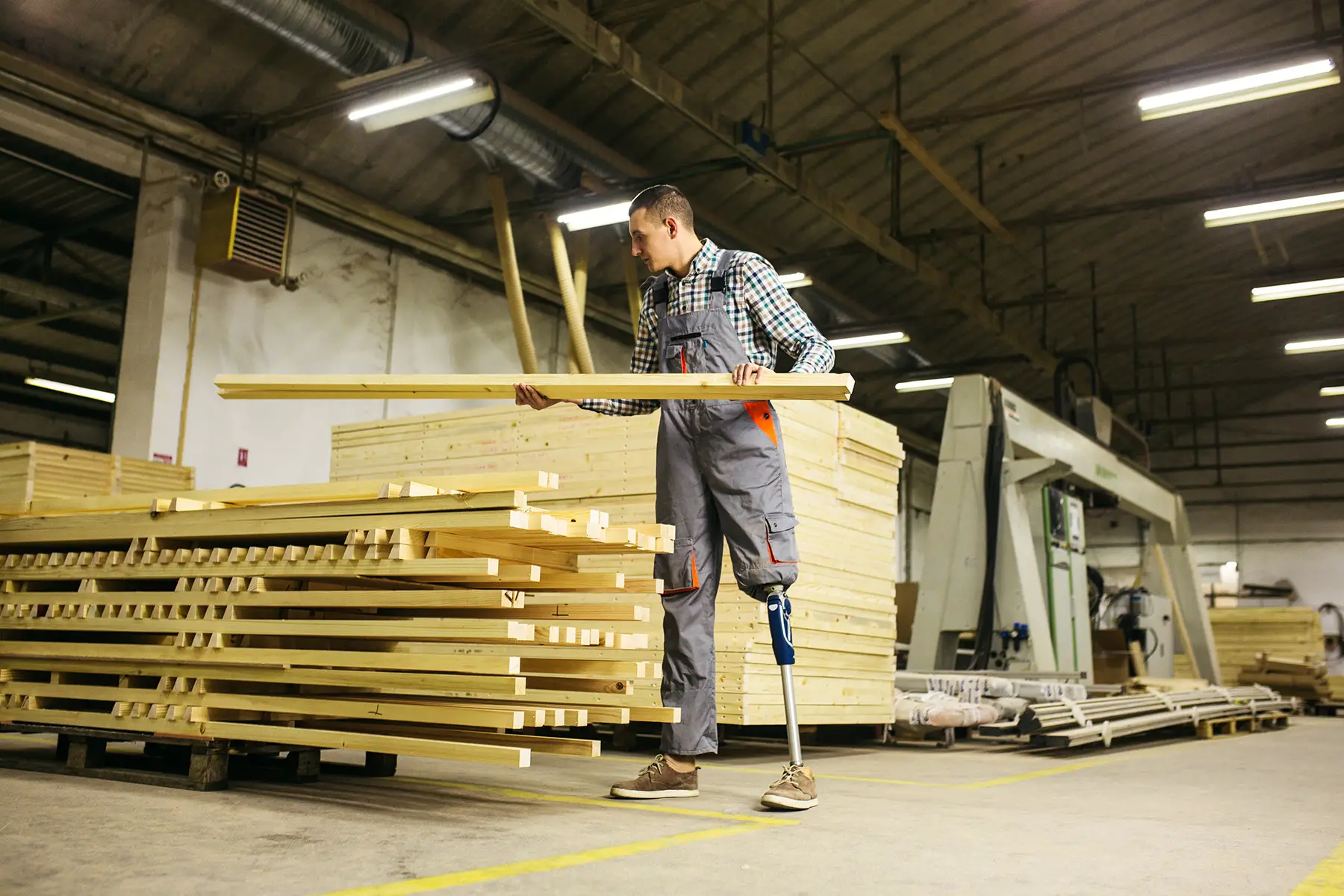
Employees must also register with the National Institute for Insurance against Accidents at Work ( Istituto Nazionale per l’Assicurazione contro gli Infortuni sul Lavoro – INAIL ). This provides insurance against workplace injuries.
Self-employed workers and freelancers enroll with the INPS too. However, they have to contribute more as they cannot share the payments with an employer.

Social security in Italy
Because Italy has a tax-funded national healthcare system , there is no statutory health insurance scheme linked to employers. However, larger companies often offer private health insurance as an additional workplace benefit. Many firms also provide occupational pensions that workers can use to increase their state pensions.
Historically, social principles and local community support underpinned commerce in Italy, as is the case with Monte dei Paschi di Siena (MPS) , the world’s oldest surviving bank . Today, many businesses still invest in their communities, for example, by donating to local causes or providing in-kind support.
Impronta Etica is the leading Italian body promoting Corporate Social Responsibility (CSR) in Italy. It is a non-profit organization and a partner of CSR Europe . It encourages its members to develop their CSR strategies.
In a more formalized sense, CSR has grown in Italy since 2017. According to a national report (in Italian) by Osservatorio Socialis (a CSR advocate), the number of businesses focusing on CSR in Italy has increased steadily:
- 44% in 2001
- 85% in 2017 (in Italian)
- 96% in 2021
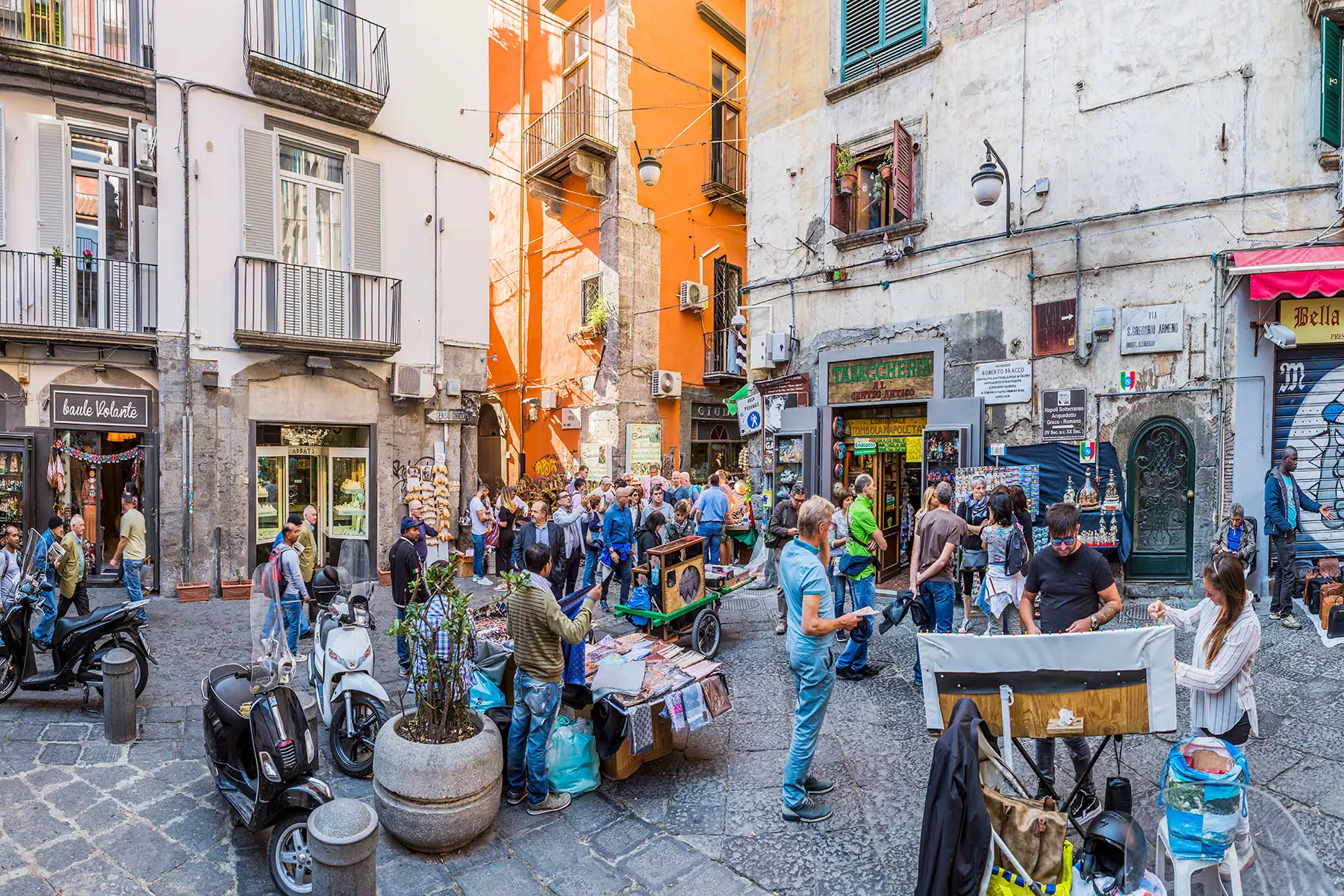
Additionally, Italy scored 57 out of 100 points on the CSR Hub Ratings based on 505 companies (2022). This index examines the following aspects of businesses:
- Community: development and philanthropy, product, human rights and supply chain
- Employees: compensation and benefits, diversity and labor rights, training, health and safety
- Environment: energy and climate change, environmental policy and reporting, resource management
- Governance: board, leadership ethics, transparency and reporting
Furthermore, Italy ranks 25th internationally (out of 193 UN Member States) on the 2022 Sustainable Development Report . The country scores 78.3 out of 100. It is a global assessment of countries’ progress toward achieving the 17 Sustainable Development Goals (SDG) and looks at the following indicators:
- SDG1: No poverty
- SDG2: Zero hunger
- SDG3: Good health and well-being
- SDG4: Quality education
- SDG5: Gender equality
- SDG6: Clean water and sanitation
- SDG7: Affordable and clean energy
- SDG8: Decent work and economic growth
- SDG9: Industry, innovation, and infrastructure
- SDG10: Reduced inequalities
- SDG11: Sustainable cities and communities
- SDG12: Responsible consumption and production
- SDG13: Climate action
- SDG14: Life below water
- SDG15: Life on land
- SDG16: Peace, justice, and strong institutions
- SDG17: Partnerships for the goals
You can report any suspected incidences of fraud to the European Anti-Fraud Office .
Italy’s institutions have a history of being affected by corruption and fraud, with one of the main problems being the infiltration of organized crime . Business is no different. The country ranks 41st on the 2022 Transparency International Corruption Perceptions Index , scoring 56 out of 100. This indicates a moderate level of corruption.
The Group of States against Corruption ( GRECO ) – a Council of Europe anti-corruption group – has identified problems such as conflicts of interest arising between businesses, judges, and politicians, with bribery a common issue. One recent fraud scandal was a business lease and tax credit scam involving Italian businesses that cost the authorities around €440 million.
- Italian Chamber of Commerce ( Camere di Commercio ) – Italy’s main business network with local chambers across the country
- Istituto Nazionale per l’Assicurazione contro gli Infortuni sul Lavoro – INAIL – National Institute for Insurance against Accidents at Work
- Istituto Nazionale della Previdenza Sociale – INPS – National Institute for Social Security
Related Articles

- Entertainment
- Environment
- Information Science and Technology
- Social Issues
Home Essay Samples World
Essay Samples on Italy
The case of the italian immigration crisis and its solutions.
The European continent, due to its geographical disposition and its enormous historical importance, can be considered the “heart” of the world. The argument asserting that we live in a world dominated by Western Eurocentric canons and values, no matter how contradictory and biased it may...
- European Union
Venice Carnival And Mask Tradition'S Impact On Culture
The city of Venice in general is widely acclaimed due to it’s frequent appearances in art, music, theatre and literature, both new and old. It’s world renowned association with fancy dress or ‘masquerade ball’ masks is undeniable. From the city’s stunning architecture, river boats and...
- Cultural Identity
History And Character Of The City Of Rome
Rome, Italian Roma, notable city and capital of Roma provincia (territory), of Lazio regione (district), and of the nation of Italy. Rome is situated in the focal bit of the Italian landmass, on the Tiber River around 15 miles (24 km) inland from the Tyrrhenian...
Impact Of Political Corruption On The Voter Turnout In Italy And Chile
Political corruption is commonplace in Italian and Chilean history. The effects can be traced from the period of 1990-2010 and to this day some citizens do not trust their government. It is easy for a government official to abuse their power to satisfy their personal...
- Political Corruption
Female Emancipation within iItalian Mafia Groups
The politics of female involvement in the formerly-secret Mafia-style group of lawless malcontents Camorra, originating in Naples and Neapolitan emigrant communities from 1830, have an increasing salience in modern Italy and the new Europe at this juncture of its development, as trends analysed by Longrigg...
- Emancipation Proclamation
Stressed out with your paper?
Consider using writing assistance:
- 100% unique papers
- 3 hrs deadline option
The Geographical and Economical Overview of Italy and Its Regions
For my paper I am exploring the region of Italy, the Italian Republic, and all of the surroundings. The geographical imagination of Italy puts the country in south eastern Europe that is made up of a peninsula, surrounded by the Mediterranean Sea. The country covers...
- Economic Development
The Climate of Italy According to Its Geographical Position
The trip most wanted to be traveled would be Italy. Italy is a European country consisting of a peninsula and surrounded by many other islands. Italy is located in south central or west Europe with an area of 116,350 square miles. The country borders with...
- Climate Change
The Import and Export Culture of Italy
Italy is in Southern Europe, right next to the Mediterranean Sea. Italy is one of the most prosperous countries in the world. Its influence on other countries has spread well beyond its borders. Italy is bordered by the Adriatic Sea on the east coast and...
- Economic Growth
The Sino-Italian Relationship Through the Silk Road
China and Italy have enjoyed a mutually beneficial relationship for centuries, in terms of commerce, economy and culture. In this essay, I will examine the early stages of the Sino-Italian relationship, dating back to the Roman Empire. I will then focus on the importance of...
Italy as the Birthplace and Center of Renaissance
In Italian the Renaissance is pronounced “Il Rinascimento” and Italy was a primary place when it came to the Rinascimento, but what made Italy the destination of the Renaissance? Other countries such as France, Germany, and England went through similar culture changes, but Italy was...
- Art History
- Renaissance
Best topics on Italy
1. The Case Of The Italian Immigration Crisis And Its Solutions
2. Venice Carnival And Mask Tradition’S Impact On Culture
3. History And Character Of The City Of Rome
4. Impact Of Political Corruption On The Voter Turnout In Italy And Chile
5. Female Emancipation within iItalian Mafia Groups
6. The Geographical and Economical Overview of Italy and Its Regions
7. The Climate of Italy According to Its Geographical Position
8. The Import and Export Culture of Italy
9. The Sino-Italian Relationship Through the Silk Road
10. Italy as the Birthplace and Center of Renaissance
Need writing help?
You can always rely on us no matter what type of paper you need
*No hidden charges
100% Unique Essays
Absolutely Confidential
Money Back Guarantee
By clicking “Send Essay”, you agree to our Terms of service and Privacy statement. We will occasionally send you account related emails
You can also get a UNIQUE essay on this or any other topic
Thank you! We’ll contact you as soon as possible.
Your client portal login provides access to your organization’s preferred pricing and customized features
- About Us CIBTvisas Global Offices Immigration Services CIBTvisas Global Leadership CIBTvisas Careers Contact CIBTvisas In The News
- Travel Visas Do I Need a Visa? Expedited Visa Solutions ETA Travel Visa FAQs Corporate Travel Solutions
- Passports Same Day Passport Passport Renewal First-Time Passport Lost or Stolen Passport Child Passport Name Change Second Passport Passport FAQs
- Document Services
- Resources CIBTvisas Travel Blog Destination Entry Requirements Podcast ETIAS White Papers Research Webinars
- Services A1 Compliance Global Immigration Services US Immigration CIBTvisas Service Directory Learn More About Our Services Corporations Cruise Lines Tour Operators Onsite Services All Partner Solutions Learn More About Our Client Solutions
- Your Order Check Order Status View Invoice Upload Documents
A Guide to Business Etiquette in Italy
When it comes to conducting business in Italy, understanding and respecting local customs and etiquette is crucial for building successful relationships. Italy's rich cultural heritage plays a significant role in its business practices, which often emphasize warmth, personal connections, and a certain level of formality.
In this guide, we'll explore key aspects of business etiquette in Italy, ranging from punctuality to dining manners, to help you navigate the Italian business landscape confidently and respectfully.
Punctuality
Business cards, business attire, gift-giving, business meetings etiquette, dining etiquette, things to know about doing business in italy, finding success in italian business culture, travel well-informed with cibtvisas.
Italians tend to have a very relaxed, laid-back attitude toward punctuality. In Italian culture, it's not uncommon for people to arrive 10 to 15 minutes late for appointments or engagements. Due to this casual attitude, meetings may not always start on time. Foreign visitors shouldn't feel like the tardiness of their Italian colleagues reflects a lack of respect; it's part of the Italian lifestyle.
However, as an outsider, it's best to arrive on time or slightly early for meetings.
At most Italian companies, it's the higher-ups who hold the decision-making power. Managers and executives may confer with each other, but lower-ranking individuals aren't generally involved in major decision-making.
Based on this, titles and seniority hold a significant amount of weight, so it's essential to address individuals using appropriate titles and surnames until you're invited to use first names.
Women are also underrepresented in higher-level jobs in Italy, facing gender stereotypes and issues with workplace harassment.
Even though the standard greeting in Italian society is the cheek kiss, Italian business culture is slightly more formal. Greetings in business settings typically consist of a firm handshake with a warm, genuine smile and eye contact.
Italians appreciate personal connections, so take the time to engage in small talk about non-business matters before diving into the main agenda. You can also use some basic Italian words and phrases to show your respect for their language:
- Hello – Ciao
- Good morning – Buon giorno
- Goodbye – Arrivederci
- How are you? – Come sta?
- Nice to meet you – Piacere di conoscerla
- Please – Per favore
- Thank you – Grazie
- My name is... – Mi chiamo...
- Yes – Si
- No – No
Business cards are usually exchanged at the start of Italian business meetings. There isn't an exact ritual to follow for this aside from politely receiving, examining, and storing the card. Make sure to bring plenty and ensure it has only essential information like your name, contact information, and job rank. Translations in Italian and your native language are also appreciated in case your Italian counterpart doesn't speak English.
Italy is consistently ranked as one of the most fashionable countries on Earth, so it's only natural that Italy's elegant, sophisticated sense of style shows up in business settings. Business attire should be conservative, chic, and well-tailored. Men usually stick to dark-colored suits and dress shoes while women choose stylish, formal outfits, like dresses or skirts and blouses with high heels.
Pay attention to accessories and grooming, as they contribute to the overall impression you make. Keep things simple but classy.
Exchanging gifts isn't commonplace in the Italian business world, but you can present your Italian business partners with thoughtful, high-quality, and inexpensive gifts, like wine or chocolates, to mark the end of a business deal. Flowers should be avoided since some types have negative connotations.
Business meetings in Italy are often pretty relaxed and laid-back, with plenty of time for small talk and informal socializing. Here's what you can expect:
Scheduling and arrival
- Schedule meetings two to three weeks in advance.
- Arrive early and prepared in formal business attire.
- Be patient, as your Italian counterparts may be slightly late.
Greetings and seating
- Greet everyone with proper titles and last names.
- Shake hands with eye contact and warm smiles.
- Exchange business cards during this time.
- Take your seat as indicated by your Italian host.
- Most meetings kick off with small talk, so don't dive straight into business matters.
Discussion and negotiation
- Agendas are often loosely followed, due to small talk and going off-topic, so expect that some meetings may run long.
- Be prepared for a mix of formal conversation and more relaxed dialogue.
- Italians often enjoy lively discussions and debates, but maintain a respectful and professional tone.
- Even if your Italian colleagues get very animated and loud, try to keep a calm demeanor.
- Negotiations and discussions may take a while, so be patient.
- Pay attention, take notes, and maintain eye contact throughout the meeting.
- Meetings are usually punctuated by coffee breaks, during which business talk takes a pause.
Conclusion and follow-up
- After finalizing next steps, thank everyone with handshakes and appreciative words.
- Send a thoughtful and personalized follow-up email or letter.
Italy is home to one of the most famous cuisines in the world, and Italians love dining out. Meals are multi-hour affairs for both social and business occasions, with business lunches being the main time to combine work and food in the Italian business world.
Business lunches last anywhere from two to three hours and are usually pretty informal. Instead of talking about business, the conversation will usually stick to other topics, like sports or current events. It's a great time to get to know your Italian business partners better and strengthen the business relationship through quality non-work time.
Along with leaving the business talk in the boardroom and sharing a delicious meal with your colleagues, you should also observe standard Italian table manners:
- Wait for the host to start eating.
- Avoid placing your elbows on the table.
- Keep your hands visible on the table when not using your utensils.
- Usually, the person who extended the invitation will pay, but it's polite to make a show of offering to pay or contribute.
- When it comes to caffeinated beverages, remember: Cappuccino and other milky coffee drinks are only consumed in the morning in Italy, and espresso should be downed in one shot rather than multiple sips.
- Lively meetings: It's common in Italian business meetings for colleagues to interrupt, talk over each other, use expressive hand gestures, and talk loudly. Don't be startled or surprised; it's common practice.
- Be flexible: Everything from arriving on time to timelines for projects is flexible and open to adjustments here, so be patient and don't rush the process.
- Enjoy the small talk: Italians like to get to know the people they're in business with, so meetings will generally start with small talk and can often go off-topic and lapse into small talk. Go along with it and use it as a chance to get to know your Italian business partners better
- Personal space: Don't be surprised if you find an Italian business associate standing pretty close to you. Italians have a relaxed attitude toward personal space and don't mind getting up close to other people.
- Build personal relationships: Building relationships is essential in Italy. Skipping small talk and rushing into business matters can be seen as impolite. Take the time to engage in personal conversations before discussing business matters.
- Coffee breaks: Coffee breaks are a common feature of Italian meetings, allowing participants to relax and engage in further informal conversations. Use this time to continue building relationships and discussing both business and personal matters.
Mastering business etiquette in Italy requires an understanding of the country's cultural nuances and a willingness to adapt to local customs. By embracing these cultural norms, you'll not only navigate the Italian business landscape effectively but also leave a positive and lasting impression on your Italian counterparts.
An experienced visa specialist can help you navigate the complexities of border crossing requirements. Contact CIBTvisas for a quote today.
Stay Up To Date
Stay up to date on the latest travel news from the experts at CIBTvisas.
| First Name: | |
| Last Name: | |
| Email: | |
| Company: | |
| Job Title: | |
About CIBTvisas
- Travel Visas
CIBT Around the World
- netherlands
- switzerland
- United Kingdom
- United States
Top Destinations
- Vietnam Visa
- Brazil Visa
- Australia Visa
- Indonesia Visa
- Saudi Arabia Visa
- 800-929-2428
- Learn More About Our Client Solutions
- Privacy Policy
- Terms & Conditions
- Copyright 2024
- Privacy Shield Compliant
- TRAC Certified
- As Seen in The New York Times

Essay on Italy
Students are often asked to write an essay on Italy in their schools and colleges. And if you’re also looking for the same, we have created 100-word, 250-word, and 500-word essays on the topic.
Let’s take a look…
100 Words Essay on Italy
Introduction to italy.
Italy is a country in Europe known for its rich history and beautiful art. It looks like a boot on the map and has seas on three sides. Many people visit Italy to see its famous cities, eat delicious food, and enjoy the lovely weather.
Famous Places
In Italy, cities like Rome, Venice, and Florence are full of old buildings and famous art. Rome has the Colosseum, an ancient arena, and Venice has canals instead of streets. Florence is the birthplace of the Renaissance, a time when art and learning grew a lot.
Italian Food
Italian food is popular all over the world. Pizza and pasta come from Italy. Italians love to use fresh ingredients like tomatoes, olive oil, and cheese. Gelato, a kind of ice cream, is a sweet treat many enjoy.
Italian Culture
Italians are known for their love of family, music, and celebrations. Football is the most popular sport. Italy also has many festivals that show its traditions and history. People from all over come to enjoy these events.
Italy is a country with a lot to offer. From its historic sites and tasty food to its vibrant culture, there’s something for everyone. It’s a place that many dream of visiting.
250 Words Essay on Italy
Italy is a country in Europe known for its rich history and beautiful landscapes. It looks like a boot on the map and has seas on three sides. Many people visit Italy to see its art, monuments, and enjoy its famous food.
The Land and Cities
Italy has mountains, hills, and beaches. The Alps are big mountains in the north, and the Apennines go down the middle. Big cities like Rome, which is the capital, Milan, and Venice are in Italy. Rome has an old stadium called the Colosseum, and Venice has water streets.
Italian culture includes famous paintings and buildings. Long ago, artists like Leonardo da Vinci made great art. Italians also love music and opera. People all over the world like Italian food like pizza, pasta, and gelato, which is Italian ice cream.
Famous Italian Festivals
In Italy, there are many festivals. One is called Carnevale, where people wear masks and costumes. Another is the Venice Film Festival, where new movies are shown.
Sports in Italy
Football, or soccer, is very popular in Italy. The Italian football team has won many important games. People also enjoy car racing, especially Formula One.
500 Words Essay on Italy
Italy is a country in Europe that looks like a high-heeled boot on the map. It is known for its interesting history, delicious food, and beautiful places. Many people visit Italy to see its art, old buildings, and to enjoy the sunny weather.
History of Italy
Long ago, Italy was home to the Romans, who built a huge empire. The city of Rome was the center of this empire. Today, you can still see old Roman buildings like the Colosseum, where gladiators fought. After the Roman Empire ended, Italy had many different rulers and was divided into smaller states for a long time. It became one country again in 1861.
Famous Italian Food
Italian food is famous all over the world. Pizza and pasta are the most popular dishes. They come in many different types with various sauces. Cheese and tomatoes are often used in Italian cooking. In Italy, people enjoy their meals with family and friends, and eating together is an important part of their culture.
Beautiful Places in Italy
Italy has many beautiful places to see. Venice is a city with canals instead of roads, and people move around in boats called gondolas. The Leaning Tower of Pisa is a tower that is not straight but tilted to one side. The countryside, especially in regions like Tuscany, has beautiful hills and vineyards where grapes are grown to make wine.
Italian Art and Culture
Italy is also famous for its art. Long ago, artists like Leonardo da Vinci and Michelangelo made paintings and sculptures that are still famous today. Italian culture includes music and festivals too. Opera music started in Italy, and there are many theaters where you can watch these musical stories.
Italy’s Impact on the World
Italy is a country with a rich history, tasty food, beautiful places, and a strong influence on art and fashion. It is a place where the past and present come together, and there is something interesting for everyone to see and learn. Italy teaches us about the Romans, gives us great food to eat, and shows us how beautiful our world can be.
That’s it! I hope the essay helped you.
If you’re looking for more, here are essays on other interesting topics:
Happy studying!
Leave a Reply Cancel reply
Your email address will not be published. Required fields are marked *

63 Best universities for International Business in Italy
Updated: February 29, 2024
- Art & Design
- Computer Science
- Engineering
- Environmental Science
- Liberal Arts & Social Sciences
- Mathematics
Below is a list of best universities in Italy ranked based on their research performance in International Business. A graph of 393K citations received by 22.8K academic papers made by 63 universities in Italy was used to calculate publications' ratings, which then were adjusted for release dates and added to final scores.
We don't distinguish between undergraduate and graduate programs nor do we adjust for current majors offered. You can find information about granted degrees on a university page but always double-check with the university website.
1. University of Bologna
For International Business

2. Bocconi University

3. University of Milan

4. Sapienza University of Rome

5. Polytechnic University of Milan

6. University of Turin
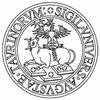
7. University of Florence

8. University of Padua
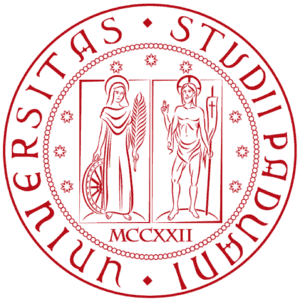
9. LUISS University

10. University of Trento
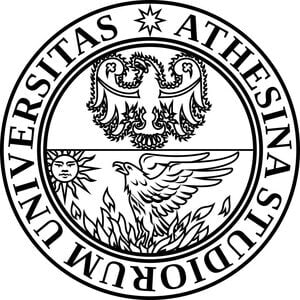
11. University of Rome Tor Vergata

12. University of Siena

13. Catholic University of the Sacred Heart

14. Sant'Anna School of Advanced Studies
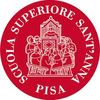
15. University of Pavia

16. Polytechnic University of Bari
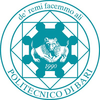
17. University of Pisa

18. Polytechnic University of Turin
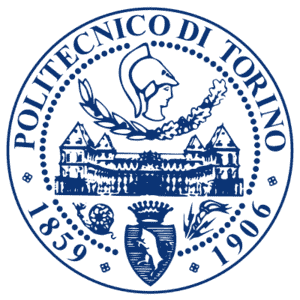
19. Federico II University of Naples

20. University of Genoa

21. Polytechnical University of Marche

22. Roma Tre University


23. University of Milano-Bicocca
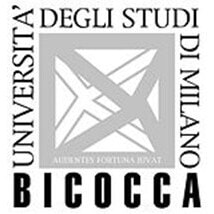
24. Parthenope University of Naples

25. University of Bari

26. University of Perugia

27. University of Palermo
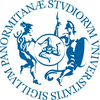
28. University of Catania
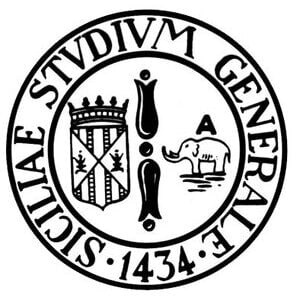
29. University of Brescia
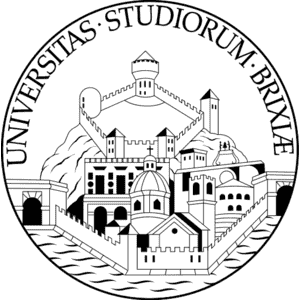
30. Ca' Foscari University of Venice

31. University of Cagliari
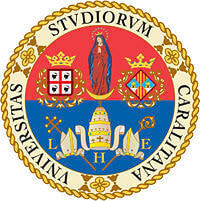
32. Carlo Bo University of Urbino

33. University of Modena and Reggio Emilia
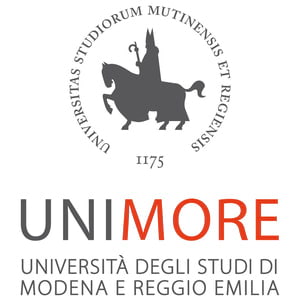
34. University of Verona
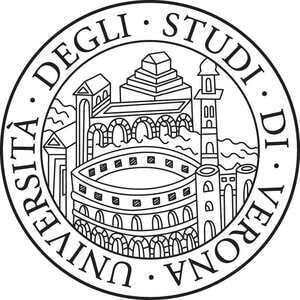
35. University of Insubria

36. University of Ferrara
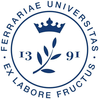
37. University of Foggia
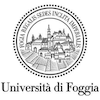
38. University of Messina
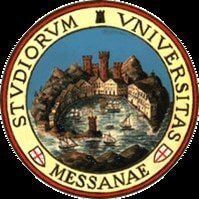
39. University of Calabria
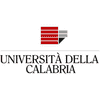
40. University of Salerno

41. University of Udine

42. University of Bergamo

43. University of Macerata
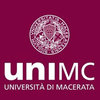
44. University of Parma
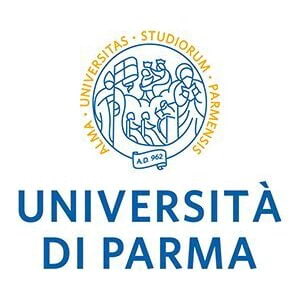
45. University of Salento

46. University of Eastern Piedmont

47. University of Molise

48. University of Trieste

49. University of Aquila

50. Free University of Bozen

51. University of Tuscia

52. University of Sassari
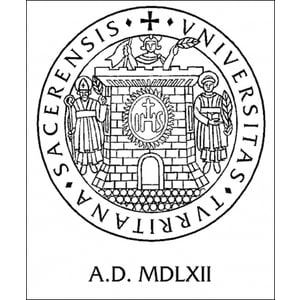
53. G. d'Annunzio University of Chieti

54. University of Campania Luigi Vanvitelli
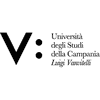
55. University of Teramo

56. University of Camerino

57. Normal School of Pisa
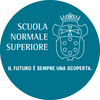
58. Basilicata University

59. University of Sannio
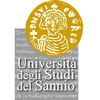
60. University of Cassino and Southern Lazio
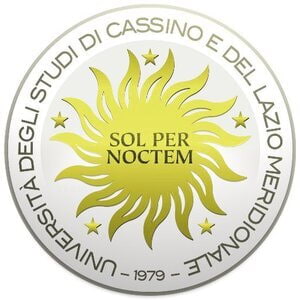
61. Mediterranean University of Reggio Calabria
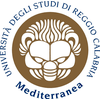
62. Maria Santissima Assunta Free University

63. University of Naples "L'Orientale"

The best cities to study International Business in Italy based on the number of universities and their ranks are Bologna , Milan , Rome , and Turin .
Business subfields in Italy
International Business Seminars
- 480-874-0100
- Make a Payment
8 Major Differences Between U.S. and Italian Business Culture
Posted by International Business Seminars on September 20, 2018 in IBS Study Abroad Blog
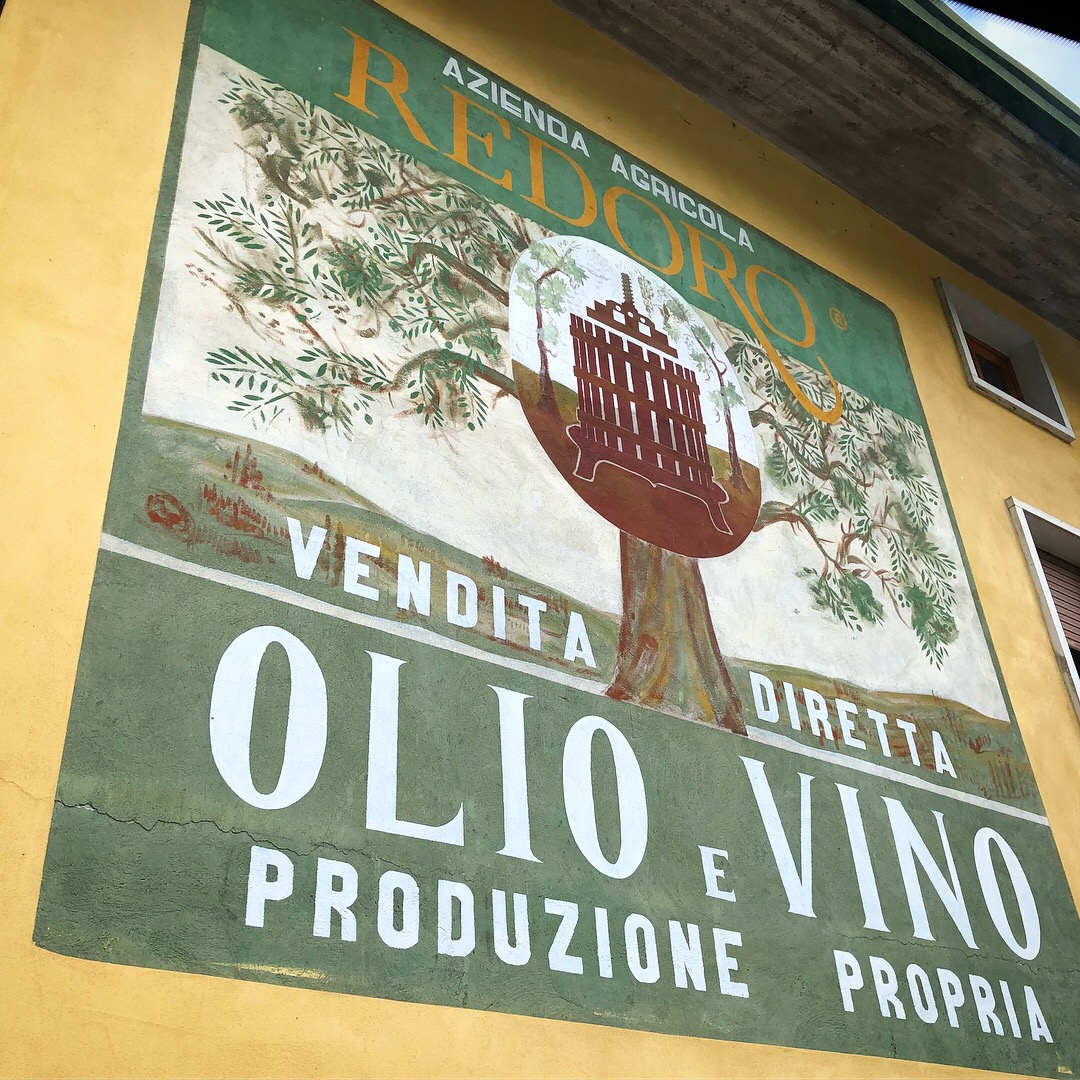
Italy has a somewhat unique economy split between high-profile international companies like Ferrari and smaller family businesses that center on natural products like fine wine and olive oil. This means that not all Italian company interactions take place in a boardroom.
How can you prepare to make an awesome first impression on your study abroad business trip to Verona? Here’s a list of eight main differences between business culture in Italy vs the U.S.
Relaxed Punctuality
While business meetings almost always start on time in American companies, Italians take a much more relaxed view towards punctuality. Don’t be surprised if you have to wait a while for a business contact to show up or for an important client to finish up his phone call before inviting you into the office. Of course, you’re still expected to show up on time.
Better Business Through Friendship
In the U.S., cordiality is important, but most companies prefer to get down to business right away. For Italians on the other hand, closing sales is never the main focus of interactions; instead, building a close relationship with future customers is key. Many initial meetings take place at restaurants over lunch.
Here are a few tips for creating a warm relationship with someone you’re probably meeting for the first time:
- Be genuine: Fake smiles aren’t fooling anyone in Verona
- Look for common interests: If you love food, you’ll get along great with people in Italy
- Learn to relax: Don’t look at your watch constantly
- Try to speak some Italian: This tells coworkers and potential clients that you’re interested in them, even if it’s only a few words
Stylish Dress
Casual Friday isn’t a thing in Italy; here, businesspeople dress to the nines pretty much all the time. The first impression you make depends greatly on what you’re wearing.
Italian business attire is formal and conservative – so don’t worry about accessories – but focused on high-quality, name-brand pieces that can get somewhat expensive. Italy is home to Milan fashion, Prada, Dolce and Gabbana, and Armani, after all.
Common Men’s Business Attire
- Dark or neutral suits
- Long-sleeve shirts
- Fashionable silk ties
- High-quality shoes
- Excellent cologne
Common Women’s Business Attire
- Formal pantsuits
- Knee-length skirt and business jackets
- Reserved-but-stylish blouses
- Two- or three-inch high heels
- Designer perfume
Italians respect you more when you wear elegant clothing. You may want to invest in a custom-tailored silk or wool suit and a good pair of leather shoes or designer heels if you’re going to work in Italy for a while. Dress chic all the time and you’ll fit in without problems.
Food Appreciation
Dining plays a huge part of life in Italy, including in the business world. Eating at local restaurants with clients or coworkers is a great way to form strong relationships. Never refuse a lunch or dinner invitation in Italy – you’ll definitely offend your host.
- When offered food – unless you have an allergy – always eat it with a smile
- Use a fork and knife to eat pizza, fruit and most other things
- Only give presents if your host gives you one first
Importance of Respect
Respect is very important in Italian culture, and you’ll especially want to show it to superiors and older people.
- Stand up when someone senior enters the room
- Don’t give off an attitude of ‘the American way is better’
- Listen attentively.
- Look Italians in the eye when you speak
Also, always use lei – a formal version of “you” – when addressing superiors and people you don’t know well, instead of the informal tu . Use signore or signora – Mr. or Mrs. – and last names in formal situations.
Italian Stereotypes
Life in Verona is nothing like what you’ve probably seen in movies. Italians don’t like it when visitors ask about topics like the mafia or other TV stereotypes. No matter what, never criticize the Pope, local football teams or Italian customs; it is OK to try to learn more about local cooking and places though.
Italian businesspeople value directness and sometimes distrust people who don’t participate in a conversation. Speaking up enthusiastically with ideas or opinions is totally acceptable and even desirable. Don’t get offended if someone else interrupts when you’re talking; it just means they view you as part of the team.
Italian business etiquette dictates that you shake hands with everyone in a group when arriving or leaving; a simple wave doesn’t cut it. People in Italy have less personal space than Americans, so your Italian coworkers will probably stand a little closer than you’re used to.
Have Fun While Studying Abroad
Italians are famous for their laidback attitude, hospitality, easygoing smile and curiosity about foreigners, so if you end up making some mistakes, it’s not the end of the world. If you learn to laugh at yourself, small errors in Italian business etiquette can actually help you get along better with people.
Share This Post

Travel the world, learn from global business leaders, and earn university credit while gaining a competitive advantage for your career.
Similar Posts You Might Be Interested In:
- Why You Should Study Abroad
- Distinguishing Real News from AI-Generated Content
- Let the Internet Pack for You
- Avoid These 3 Costly Money Mistakes When Traveling Abroad
Leave a Reply Cancel reply
Your email address will not be published. Required fields are marked *
- IBS Student Blogs
- IBS Study Abroad Blog
- International Music
- International Recipes
- Summer China
- Summer Europe
- Uncategorized
- Winter Europe
- Winter SE Asia
- CALL NOW: (480) 874-0100
Copyright ©2024 International Business Seminars. All Rights Reserved. 2930 E. Northern Ave., Bldg. B Phoenix, AZ 85028 | United States of America
Home / Essay Samples / World / Europe / Italy
Italy Essay Examples
The artists contributing to the formation of the italian futurism.
Futurism originated in Italy during the 20th century and was considered to be the turning point in Italian art. This style can also be depicted as a Social movement and was launched by the Italian poet Filippo Tommaso Marinetti. Futurism is considered to be an...
Causes & Impacts of Seasonality in Italy
Spring in Rome according to many tourists is the best time as everyone looks forward to the summer holidays and of course beach times. The fact that Rome has four seasons is not necessarily for the better or worse is just something different. Next on...
The Changes Italian Culture Made to New York
I personally believe that Italian Culture has made one of the biggest changes to the overall culture in New York. That is the main reason I chose this as the topic of my paper. Italians have made huge changes to New York ever since they...
The Victory Monument and the Italian Social Movement
In 1946, Italy rose from the ashes after twenty years of Mussolini’s rule and five years of war, but the legacy of Fascism did not fade away. Instead of confronting its problematic past and the crimes committed under the regime, the newly-born democracy moved on,...
Milan Cathedral: One of the Greatest Sights in Italy
Duomo di Milano known as Milan Cathedral, is the world’s second largest Catholic Cathedral in the world. It is dedicated to Santa Maria Nascente. This building is one of the most famous attraction in Italy. The specialty about this cathedral is its beauty and it...
Rome: the Eternal City
“Rome is the capital of Italy and one of the world’s great historic cities”(Joes). Traveling is an experience very many get to do, but very few enjoy it. Most visit destinations for personal reasons more than just visiting to see. Yet, those that visit for...
Analysis of Macroeconomic Data of Italy(2015-2017)
Italy, which is also known as Italian republic, is one of the most famous among tourists county in Europe which is located by the Mediterranean Sea. Italy shares boarders with Switzerland, France, San Marino, Austria, Vatican City and Slovenia. The population of Italy is around...
The Eternal City: Facts About Rome
“Rome is the capital of Italy and one of the world’s great historic cities”(Joes).Traveling is an experience very many get to do, but very few enjoy it. Most visit destinations for personal reasons more than just visiting to see. Yet, those that visit for pleasure...
The Risks of Corruption in Italy
The phenomenon of corruption is a problem of every society, all over the world (Meny, Della Porta, 1995)In every reality, corruption is a serious problem, which undermines and poisons the corporate structure of a country. In particular, it represents a real threat to democratic countries,...
The Major Advancements in Venice Architecture and Literature
Venice, Italy, is a unique location due to its natural protection of being surrounded by water. This made it easy to become a heart of a busy trade area. This added large amounts of wealth to the city. “This led them to build a great...
Trying to find an excellent essay sample but no results?
Don’t waste your time and get a professional writer to help!
- Russia Essays
- North Korea Essays
- Singapore Essays
- New York City Essays
- Tokyo Essays
- Hawaii Essays
- Cuba Essays
- Los Angeles Essays
- India Essays
- Peru Essays
samplius.com uses cookies to offer you the best service possible.By continuing we’ll assume you board with our cookie policy .--> -->